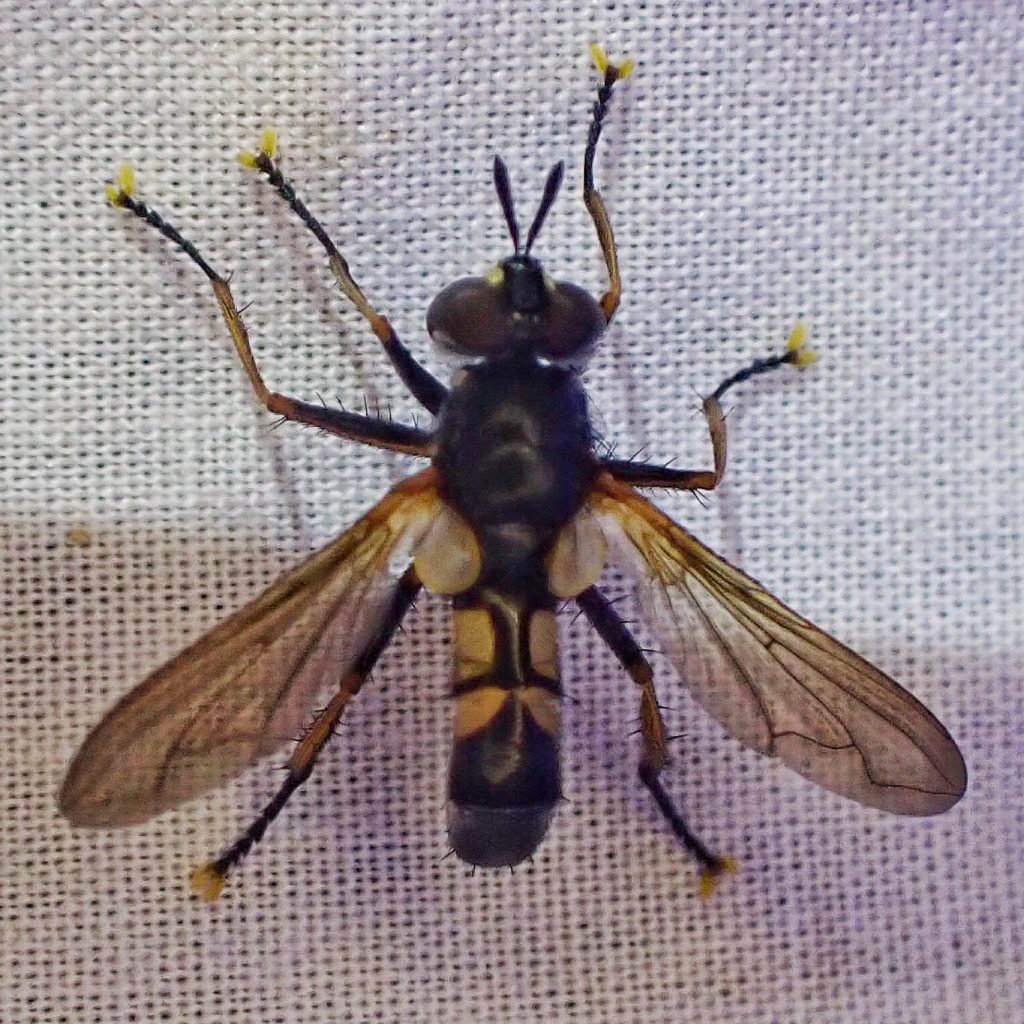
My very first thought when I saw this at my UV lights in Portland, Oregon (an adventure I talk about in the blog ‘House sitting’) was that it was a wasp, but once it stopped moving and I could see the antennae and the calypters, I realized it was a very interesting looking fly. And because of the yellowish squares on the front of the abdomen I thought it might be identifiable, although I had no idea of where to start. I got two photos before it flew off, and after cropping and editing them I plugged them into the seek app, which said it was the tachinid fly Hemyda aurata. Which seemed way too easy, but a BugGuide search showed that that was the only member of its genus in North America, and the only things that seemed at all similar were some Cylindromyia sp. which had red rather than yellow on the abdomen.
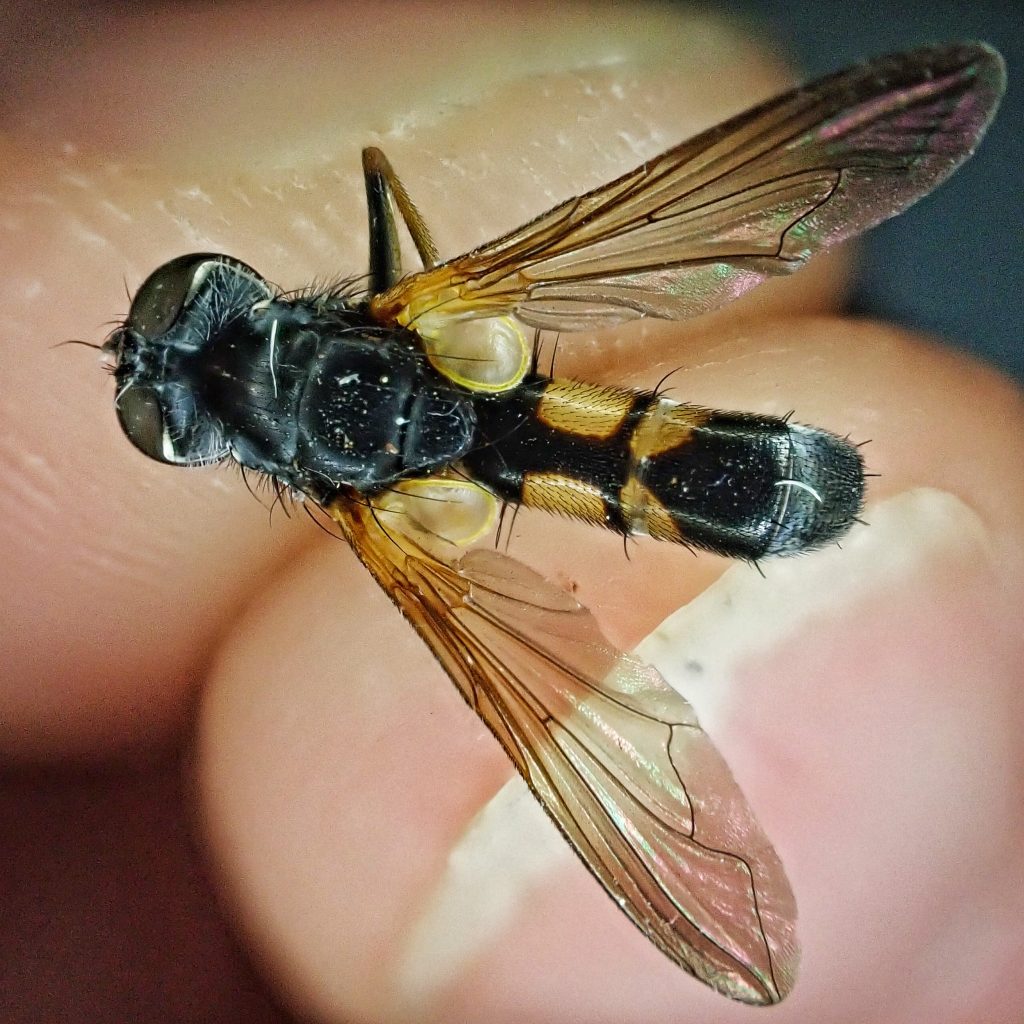
After this I desperately wanted to get more photos and I kind of staked out that sheet for awhile hoping it would come back. And lo and behold it did return, and I was able to capture it. After getting more photos from different angles I became convinced that it was indeed Hemyda aurata, and seeing that there were no entries for this species from Oregon, and only one from Washington, I submitted it to BugGuide, where they confirmed my identification. In ‘The Flies of Western North America’ Cole/Schlinger call this species rare, but my guess is that it is just undersurveyed or is not recognized or dismissed by folks not interested in the flies. It definitely seemed attracted to the light, but possibly just saw it as a hunting ground.
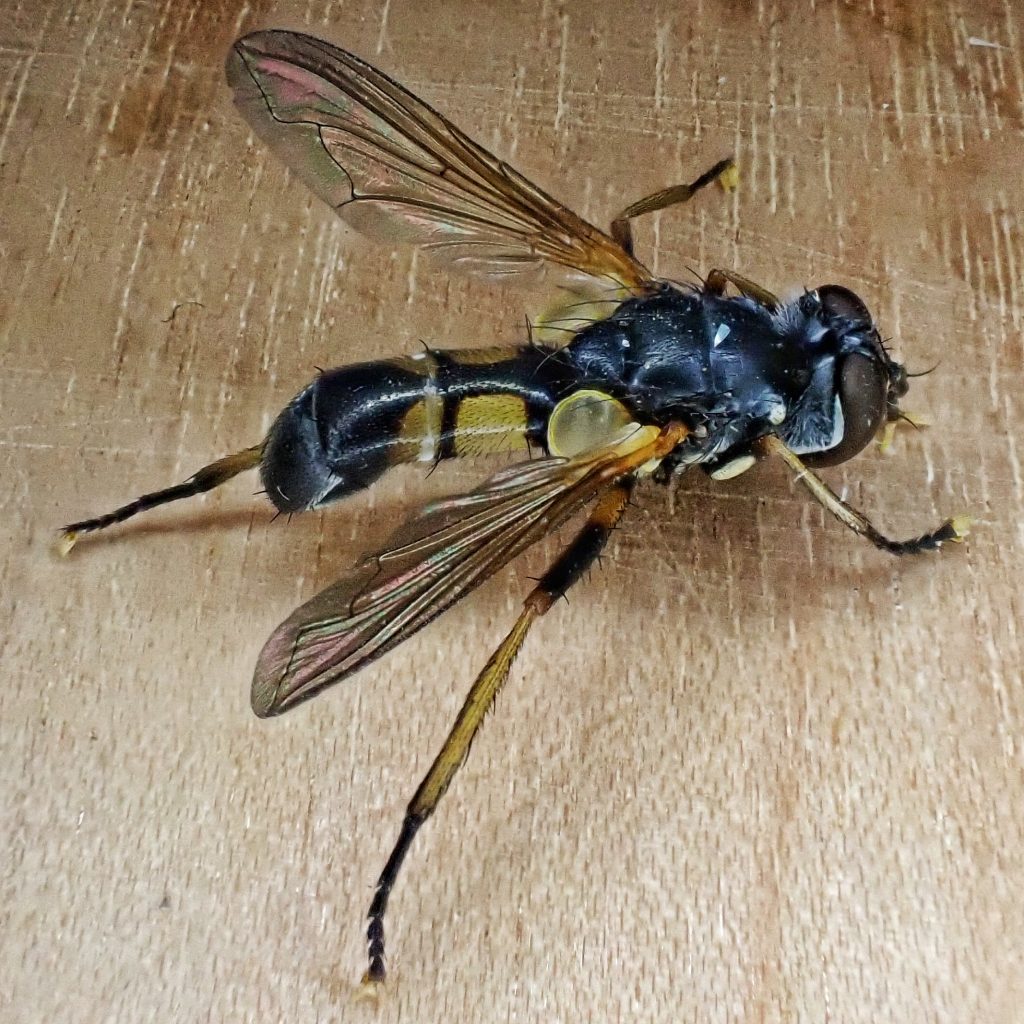
Like all tachinids, these flies are parasitoids. In this case they lay eggs on adult stink bugs of the species Podisus maculiventris, also known as soldier bugs. “Hemyda aurata, are highly attracted to the soldier bug pheromones and lay eggs, primarily on adult males. Female soldier bugs escape parasitization, except during mating, and consequently have about 25% as many tachinid eggs on their bodies as do males. Interestingly, a “cheater” male strategy has apparently evolved. Soldier bug males are attracted by pheromone produced by other males and wait in close proximity to the pheromone-emitting males while not emitting pheromone themselves. Thus, these “cheater” males attempt to intercept attracted females without being parasitized.” https://www.pnas.org/doi/pdf/10.1073/pnas.92.1.23. . I’ll be keeping an eye out for those soldier bugs coming to the light!
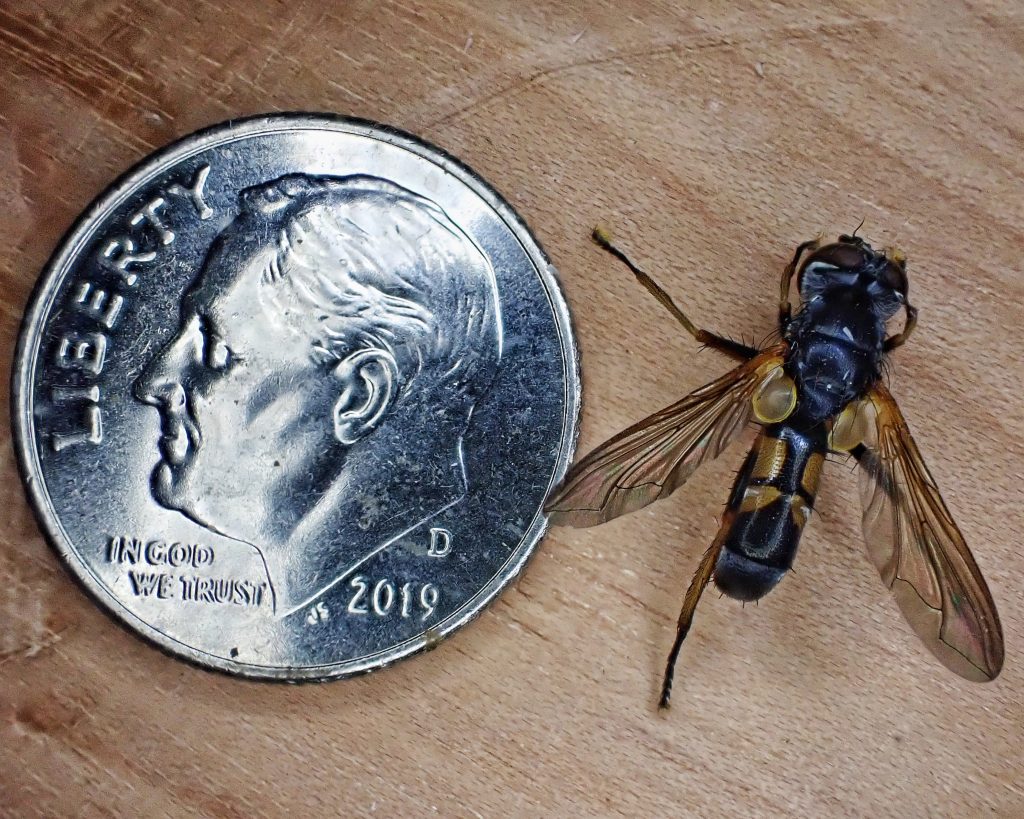
Description– “This Tachinid Fly is approximately .75 inch (20 mm) in length. It has large dark red eyes, wide, black v-shaped antennae and large yellow calypters at the base of the wing. The thorax is black and the abdomen is black with 2 wide yellow bands on the middle segments. The wings are smoky gray with orange at the base. The femurs are reddish-brown, the tibia are yellowish and the tarsii are black with yellow tarsal claws. The last section of the abdomen is flat and turned downward.” HEMYDA AURATA – Fontenelle Forest Nature Search : Fontenelle Forest Nature Search
Similar species– Cylindromyia sp. in our region have red rather than yellow on the front of the abdomen.
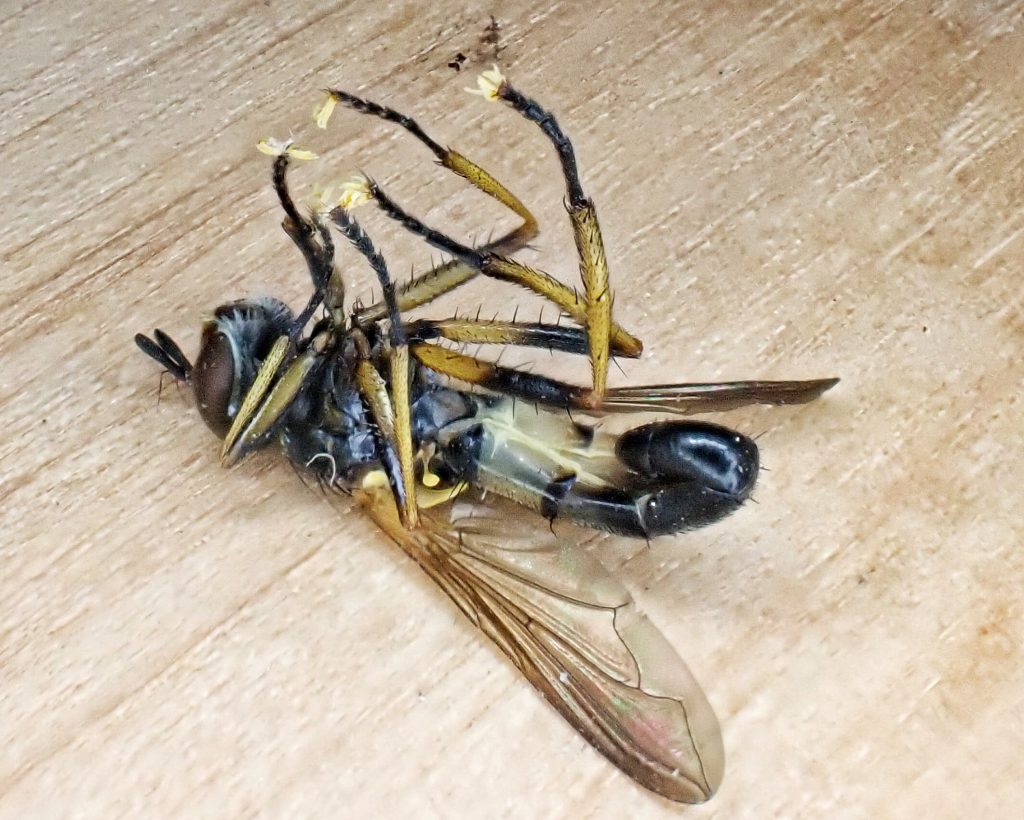
Habitat– Wherever their host species, Podisus maculiventris, is found, which is mostly in agricultural areas, but can be almost anywhere.
Range– Native to most of North America; probably uncommon to rare, but more or less region wide, in the PNW
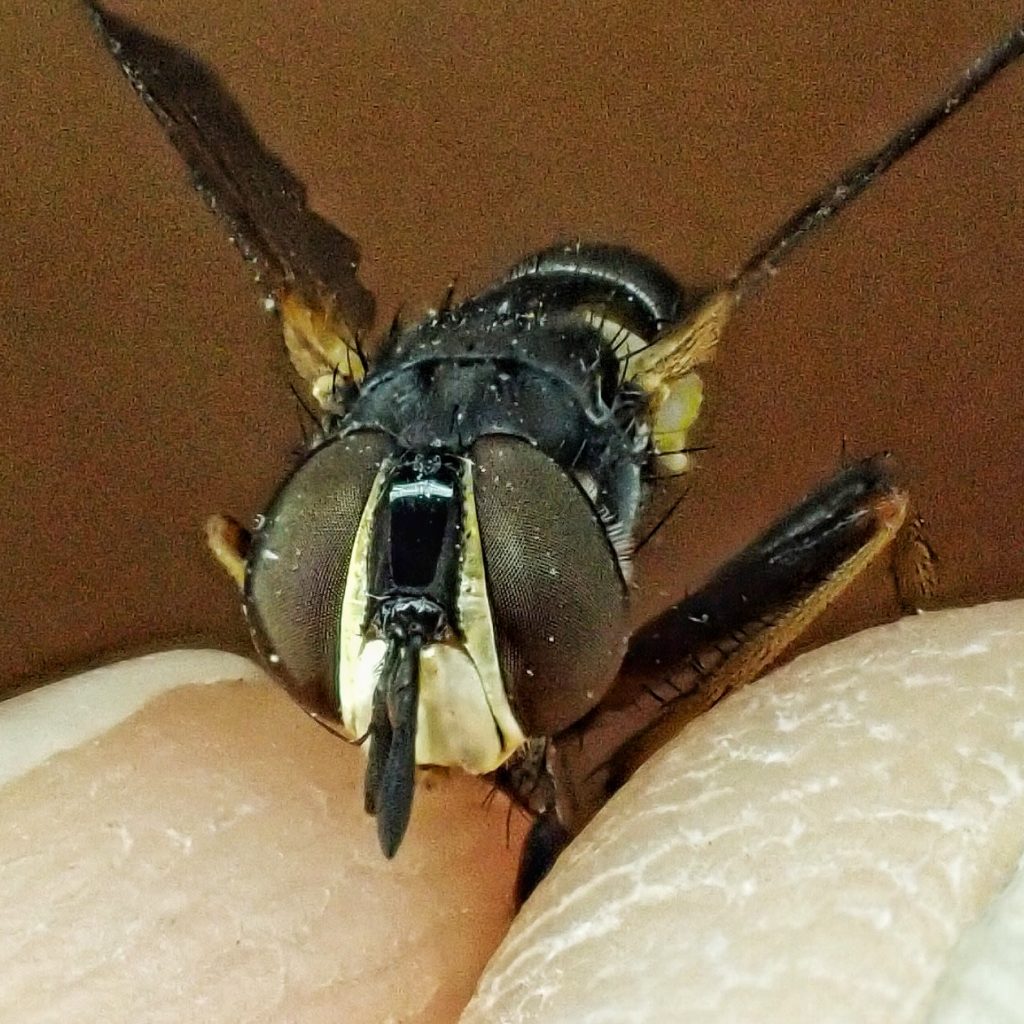
Eats– The larvae feed on a host in Pentatomidae, most commonly reported from Podisus maculiventris.
Eaten by– Probably any insectivore that can capture them.
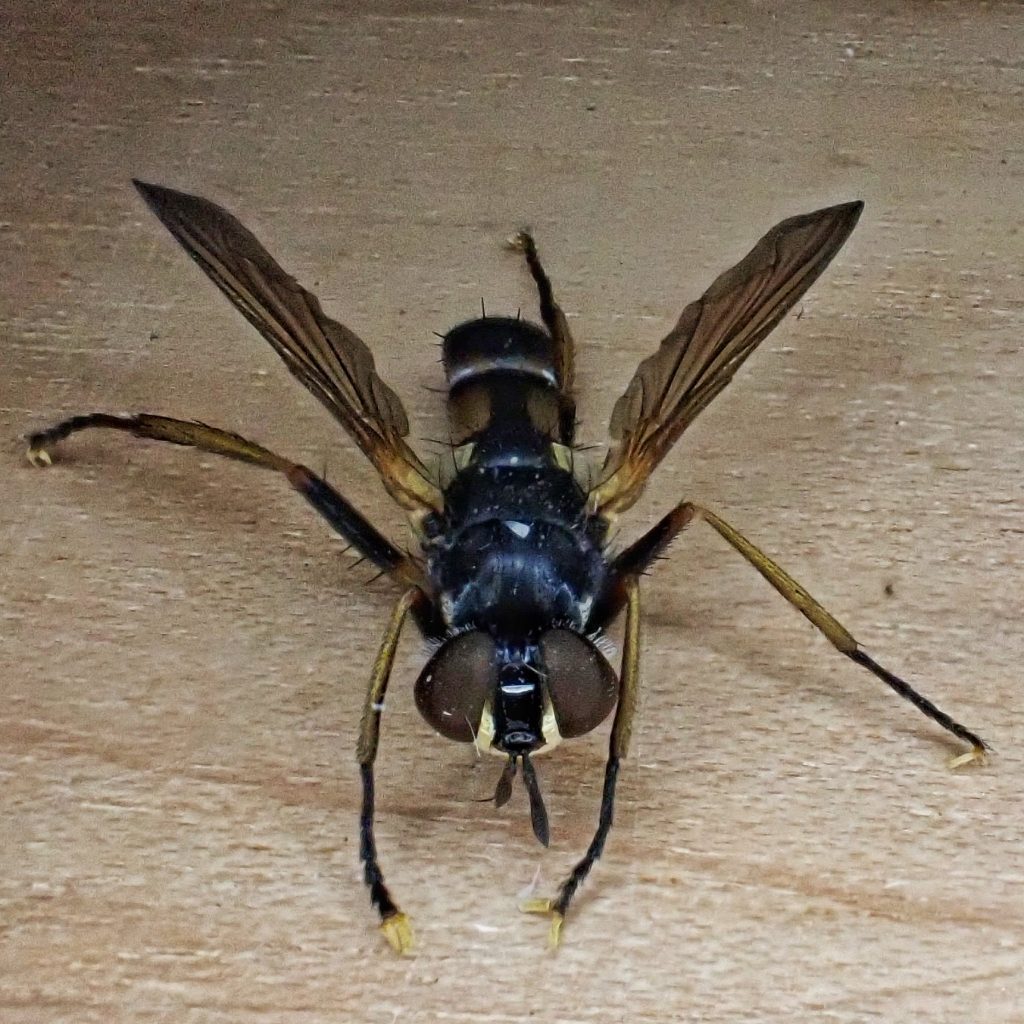
Adults active– Probably June into September in our region.
Life cycle– Most Phasiinae (the subfamily to which this fly belongs) attach an undeveloped egg to the host, in this case a soldier bug stink bug (Podisus maculiventris) which hatches and then burrows into the stink bug, feeding on it internally until it kills the host and pupates.
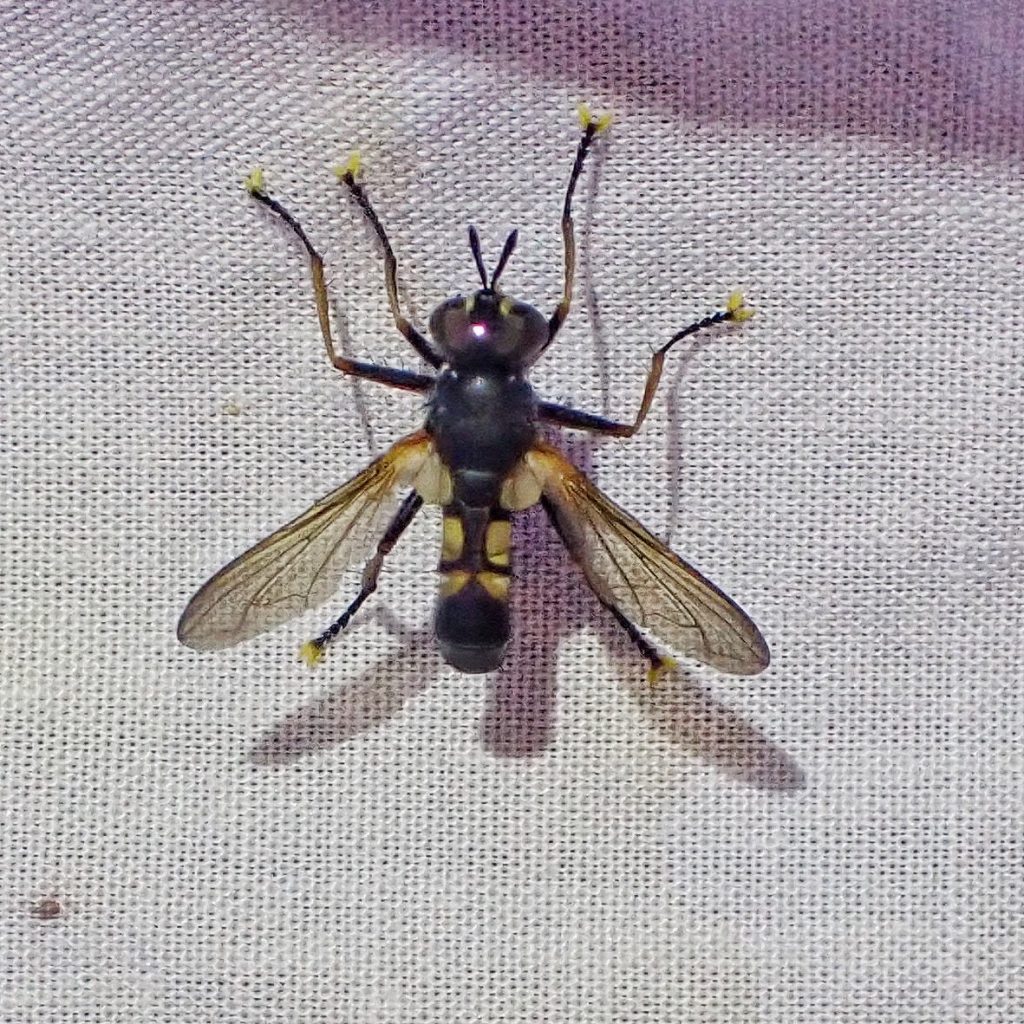
Etymology of names– Hemyda may be from the Greek words for ‘wet with blood’, but I can find nothing directly translatable, and Robineau-Desvoidy doesn’t give his reasoning. The specific epithet aurata seems to be from the Latin for ‘adorned with gold’, and Robineau-Desvoidy talks about the “sides of the forehead and face of a beautiful gold”, but he doesn’t actually state that that is the origin of the name.
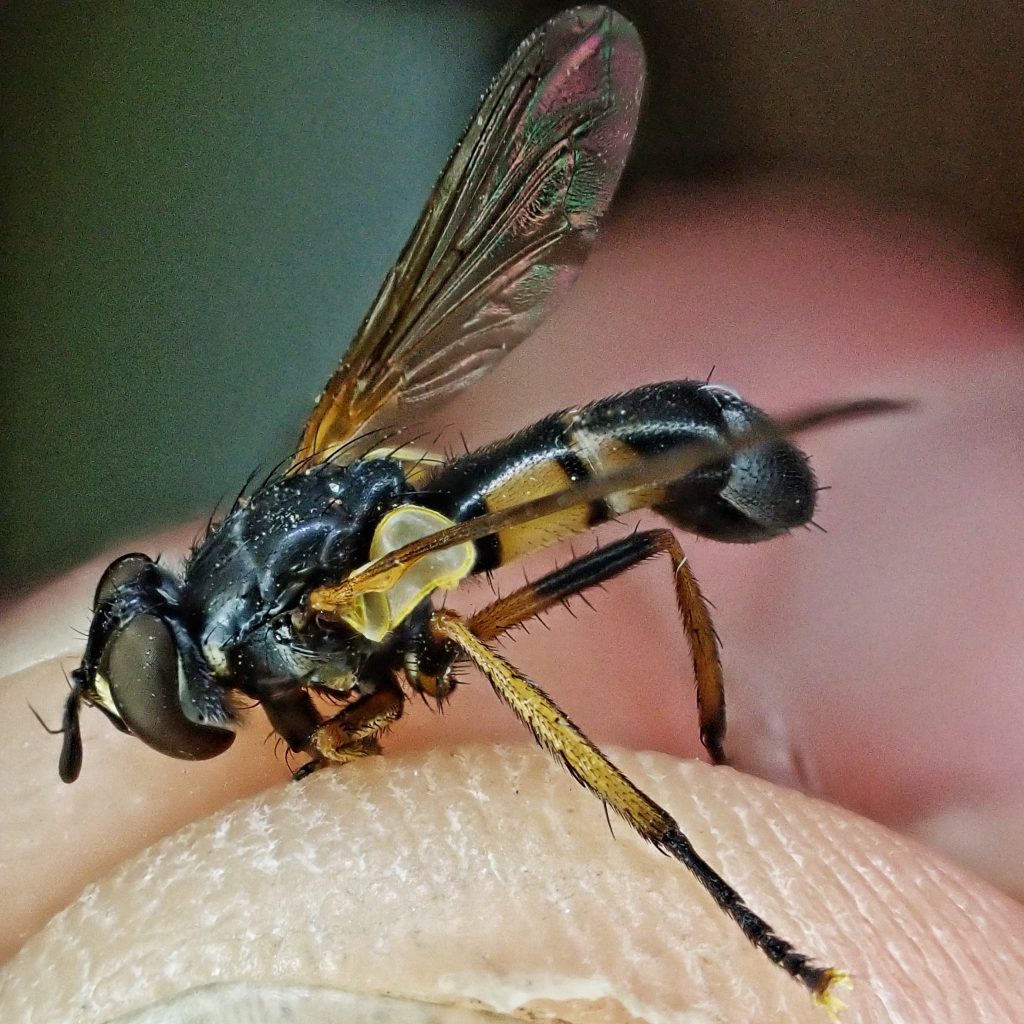
Species Hemyda aurata – BugGuide.Net
HEMYDA AURATA – Fontenelle Forest Nature Search : Fontenelle Forest Nature Search
Genus Hemyda, Tachinidae of America North of Mexico
Hemyda aurata Robineau-Desvoidy, TachImage Gallery
Maryland Biodiversity Project – Hemyda aurata
https://www.pnas.org/doi/pdf/10.1073/pnas.92.1.23
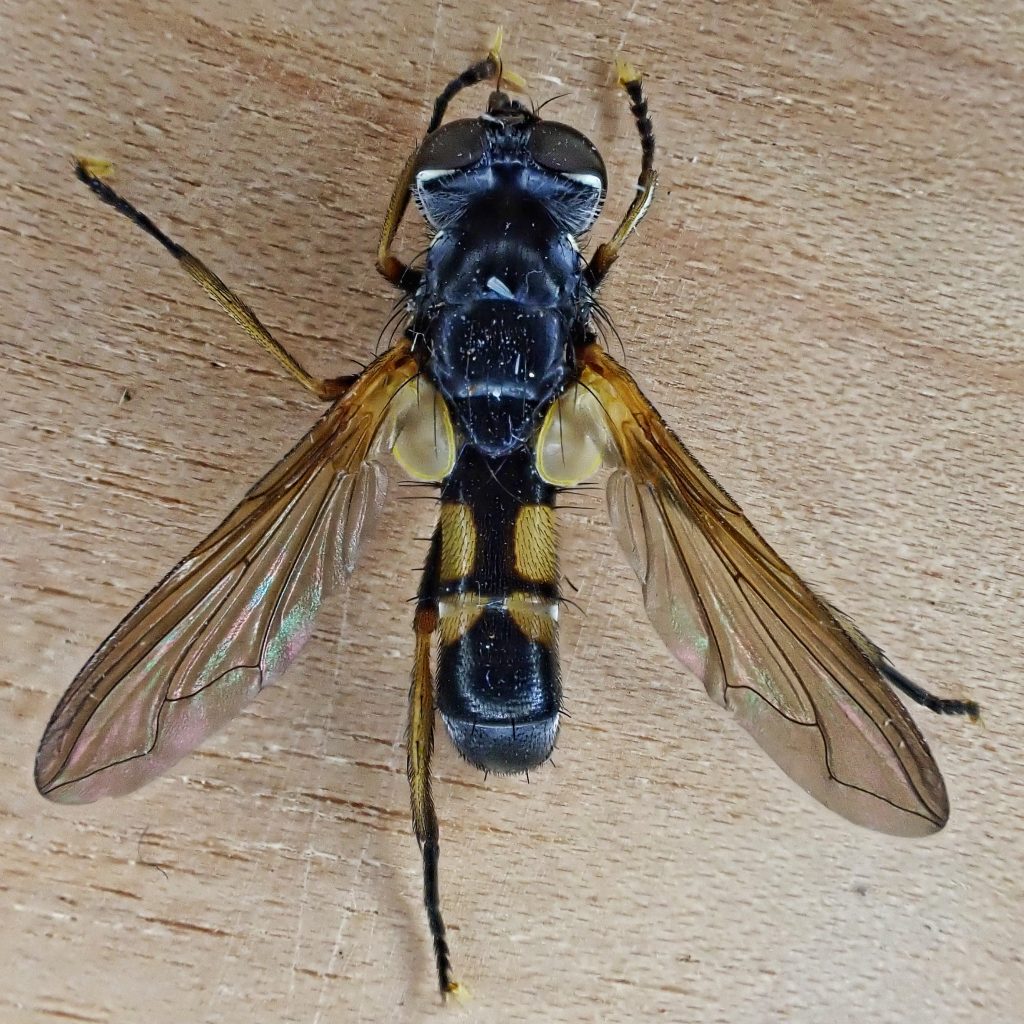
I’ve never taken much notice of calyptors before. These are very striking.
I agree! This is quite the interesting looking bug!
In addition to the yellow calpters, I couldn’t help but notice the large yellow tarsi. I don’t think I’ve ever seen an insect with colored tarsi before. I usually see them as black. All in all, a very attractive fly.
There are quite a few Hymenoptera with yellow legs, and many beetles with red ones. Tan/ brown is also pretty common. There are even grasshoppers with blue legs!